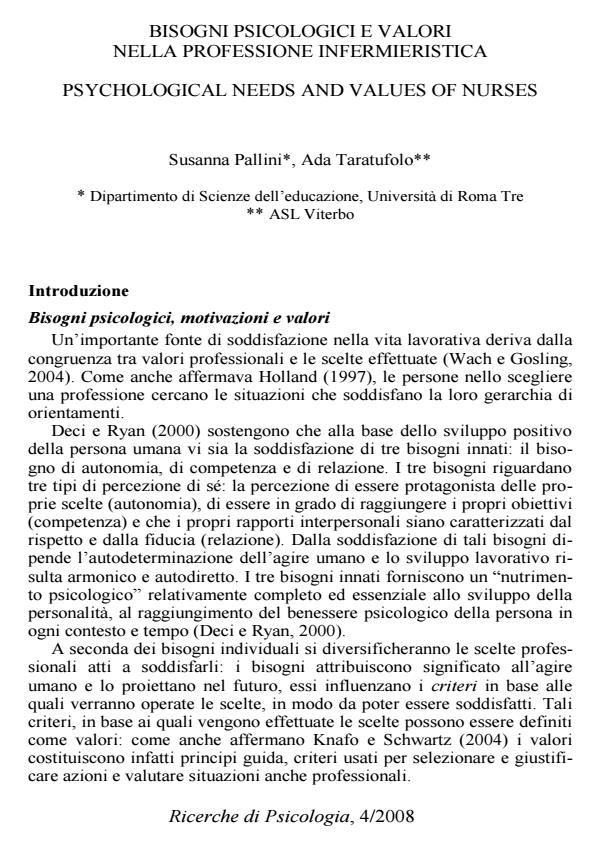Bisogni psicologici e valori nella professione infermieristica
Journal title RICERCHE DI PSICOLOGIA
Author/s Ada Taratufolo, Susanna Pallini
Publishing Year 2009 Issue 2008/4
Language Italian Pages 16 P. 91-106 File size 689 KB
DOI 10.3280/RIP2008-004005
DOI is like a bar code for intellectual property: to have more infomation
click here
Below, you can see the article first page
If you want to buy this article in PDF format, you can do it, following the instructions to buy download credits

FrancoAngeli is member of Publishers International Linking Association, Inc (PILA), a not-for-profit association which run the CrossRef service enabling links to and from online scholarly content.
Bisogni psicologici e valori nella professione infermieristica - This paper studies basic need satisfaction of competence, autonomy and relatedness (Deci & Ryan, 2000) and professional values in 232 subjects from the 102 Viterbo local health facility (ASL): 110 nursing students, 102 nurses and 20 nurses executives, assuming both the existence of relationships between need satisfaction and values and the career level had a significant effect on satisfaction and motivations. For this purpose the Basic Psychological Needs Scale (ad. It. Szadejko, 2003) and the Value Based Motivation Assessment Scale (Pallini and Laghi, in press) have been used. Prosociality and security resulted predominant, while competitiveness, autonomy and hedonism were scarcely represented. The growing professionalism of nurses would explain the evaluation of epistemic interest. In a statistically significant way nursing students value safety, belonging, cooperation and prosociality, nurses and nurse executives novelties and nurse executives competition. Student nurses perceive themselves as more satisfied in their psychological needs. Basic need satisfaction resulted to be closely linked with value of prosociality, cooperation and belonging.
Ada Taratufolo, Susanna Pallini, Bisogni psicologici e valori nella professione infermieristica in "RICERCHE DI PSICOLOGIA " 4/2008, pp 91-106, DOI: 10.3280/RIP2008-004005